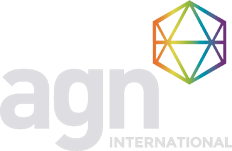The headline likely caught your eye this week, as many of the news outlets announced it! The news of lower tax rates comes as inflation adjustments for 2023 have been announced by the IRS. There are more than 60 tax provisions that have been adjusted. Below we've highlighted a few.
The Inflation Reduction Act extended certain energy-related tax breaks and indexed for inflation some energy-efficient credits and deductions beginning tax year 2023.
Highlights of Changes:
Standard Deduction for 2023:
- $27,700 for married filing jointly (increase of $1,800 from 2022);
- $13,850 ($900 increase) for single taxpayers and married filing separately;
- $20,800 ($1,400 increase) for heads of households;
Marginal Rates. The top tax rate remains 37% for single taxpayers with income greater than $578,125 ($693,750 for married couples filing jointly). The other rates are:
- 35% for income over $231,250 ($462,500 for married filing jointly);
- 32% for income over $182,100 ($364,200 for married filing jointly);
- 24% for income over $95,375 ($190,750 for married filing jointly);
- 22% for income over $44,725 (89,450 for married filing jointly);
- 12% for income over $11,000 ($22,000 for married filing jointly).
The lowest rate of 10% is for income of $11,000 or less ($22,000 for married filing jointly).
Alternative Minimum Tax. The AMT exemption for single filers is $81,300 and begins to phase out at $578,150. The exemption for joint filers is $126,500 and their phase out begins at $1,156,300.
Earned Income Tax Credit. The maximum EITC is $7,430 for qualifying taxpayers who have three or more qualifying children.
Health Flexible Savings Accounts. The dollar limitation for employee salary reductions for contributions to health FSAs is $3,050. For cafeteria plans that permit carryover of unused amounts, the max carryover is $610.
Medical Savings Accounts. An HSA participant with self-only coverage must have a HDHP with an annual deductible of at least $2,650 but not more than $3,950. Max out of pocket expenses is $5,300. For family coverage, the HDHP must have an annual deductible of $5,300 but not more than $7,900. The out-of-pocket limit is $9,650.
Foreign Earned Income Exclusion. Foreign earned income exclusion is $120,000 (up from $112,000).
Annual Gift Tax Exclusion. Annual exclusion for gifts is $17,000 (up from $16,000).
Adoption Credit and Exclusion for Adoption Assistance. The max credit for adoptions is $15,950. Employees who receive adoption assistance can exclude from income up to $15,950.
Items not indexed for inflation. By statute, certain items that were indexed for inflation are not being adjusted for 2023. These include:
- Personal exemption remains at zero. The Tax Cuts and Jobs Act eliminated the personal exemption.
- Just like 2022, there is no limitation on itemized deductions. The Tax Cuts and Jobs Act eliminated the limitation.
- The Lifetime Learning Credit modified adjusted gross income limitation remains unchanged, as does the phase out of modified adjusted gross income greater than $80,000 ($160,000 for joint filers).
There are lots of details, which may bring up questions. Your Froehling tax partner is happy to talk it through with you. Reach out to your contact or email contactus@fa-cpa.com for more information.


